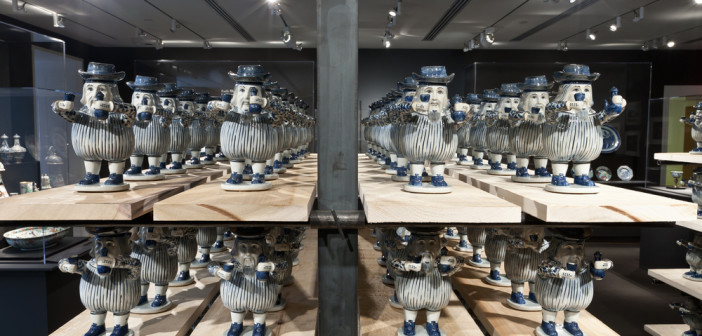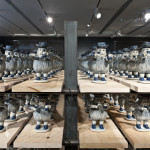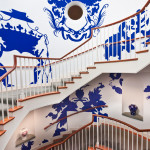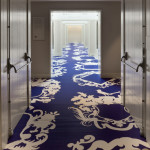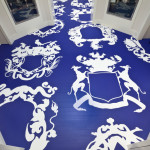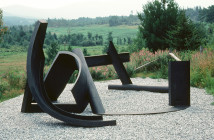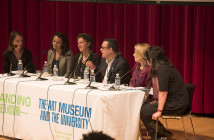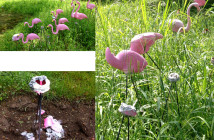In my last post, I discussed Boston’s push to brand itself as an innovation hub and raised questions about the role of art within this context. As I continue the series, I am engaging diverse members of the city’s art landscape in conversations on these questions, and exploring the issue from a variety of perspectives. Given Boston’s exceptional concentration of universities and museums, which are often considered the foundation of the city’s art scene, I wanted to speak to curators who work within these institutions. While museums and university galleries have often been viewed as sites of display rather than participation or innovation, many of these institutions understand themselves as "hubs" of activity and spaces for innovation in their own right. As these institutions increasingly seek catalytic roles and find new ways to engage with Boston’s art scene and the city as a whole, their curators bring valuable perspectives on art’s place as the city positions itself as an innovation hub. I asked curators representing a cross-section of Greater Boston’s curatorial network — the ICA’s Jenelle Porter, MassArt’s Lisa Tung, MIT’s Alise Upitis, and Peabody Essex’s Trevor Smith — to share their thoughts.
As contemporary art curators, these professionals draw from projects with artists, as well as a larger art-historical tradition, when thinking about artists’ abilities to contribute to innovation and knowledge production. In our correspondence, Jenelle Porter emphasized that art-making constitutes a job. It involves innovating in order to evoke "new ways of seeing and thinking" and to show others "what is new and relevant." Trevor Smith described artists’ roles as change agents, highlighting their ability not only to create new forms, but to recognize connections between topics and to remix cultural DNA, keeping this DNA "alive in the present tense." Lisa Tung also stressed these connections, pointing out that artists make non-linear connections and that their work can "inspire, seduce, excite, and repel" others, thus sparking change in myriad ways.
Across the board, the curators I spoke with saw a role for interdisciplinary collaboration and conversation, both within their own institutions and in the wider Boston community. Their remarks were rich in references to cross-disciplinary exhibitions and programs, and several curators commented that collaboration across artistic disciplines, and often beyond what we think of as "art," provides grounding for nearly all of their work. Tung cited the practices of artists William Kentridge and Juan Angel Chavez as exemplary of contemporary art’s interdisciplinary nature and the way in which contemporary artists "are engaged in a great conversation with each other and the world." Similarly, Porter described the ICA’s current project with Matthew Ritchie as an instance of an artist engaging with a large community about ideas, noting Ritchie’s interest in networks of information (such as systems of time or theories of physics) and the collaborative works that will comprise this project. To Smith, collaboration across disciplines shapes not just his work with artists (he cited Michael Lin's installation at PEM as one example), but also forms a core element of PEM’s ethos as a museum "founded prior to modern divisions of knowledge" and driven by a broad view of culture.
While noting that interdisciplinary collaboration always plays an unspoken role in work in many fields, Smith acknowledges the challenges inherent in this approach.. He commented that "interdisciplinary does not mean undisciplined," and that figuring out the rules of engagement is a challenging process. This recognition is key within the context of Boston’s current rush toward collaborative innovation; a thoughtful approach to collaboration, rather than a reliance on buzzwords or hasty planning, has a better chance of fostering sustainable and meaningful innovation. Furthermore, Alise Upitis pointed to a long Western tradition of valuing agreement on moral or intellectual principles over utility in friendships, and put aside the issue of tangible results to ask if both friendship and collaboration might, "as Kant speaks of fine art, have ‘the effect of advancing the culture of the mental powers in the interests of social communication.’" As Boston seeks continued relevance and prosperity through collaborative innovation, there is much to be said for considering not just the immediate products of collaboration, but its intrinsic worth. Further, we must take into account the long-term development of self and culture that collaboration grounded in common principles can foster.
In many ways, museums have already started to think along these lines. While much of the "innovation hub" rhetoric involves moving beyond walls and physical spaces, my discussions with these curators suggested a significant role for museums and institutions within the innovation hub. As Tung observed, "having a place to bring people together and exhibitions that challenge people collectively is important. When exhibitions are successful they give Boston something great to talk about and innovation follows." Porter hit a similar note, commenting, "‘newness’ can be a little scary for the world at large, but contemporary art museums — where new ideas are always being presented and explored — create a welcoming environment for bold new ways of thinking." What are the possibilities if art museums, along with smaller galleries and art spaces, were fully integrated into the innovation hub?
The curators’ comments illuminate both the promises and challenges of a holistic view of innovation that includes visual art. Upitis presented a nuanced consideration of the nature of this relationship, discussing the way in which knowledge production has become a commodity. She remarked that questions over whether and how art produces knowledge "must be considered in the context of the art world's installers, funders, fabricators, caterers, historians, gallery assistants, critics, students, artists, administrators, policymakers, collectors, and curators." This comment, in conjunction with those of Porter, Smith and Tung, counters an idea of innovation that ignores art, pointing out that its place within the 'hub' presents challenges worth thinking about. Throughout my conversations with these curators, I was struck by their commitment to exploring new ideas, and by how much interdisciplinary collaboration has informed some of their most influential work in recent years. If Boston is paying attention, these principles and approaches to innovation have significant implications for the region going forward.
- Michael Lin’s FreePort installation at the Peabody Essex Museum. Courtesy Peabody Essex Museum.
- Michael Lin’s FreePort installation at the Peabody Essex Museum. Courtesy Peabody Essex Museum.
- Michael Lin’s FreePort installation at the Peabody Essex Museum. Courtesy Peabody Essex Museum.
- Michael Lin’s FreePort installation at the Peabody Essex Museum. Courtesy Peabody Essex Museum.

